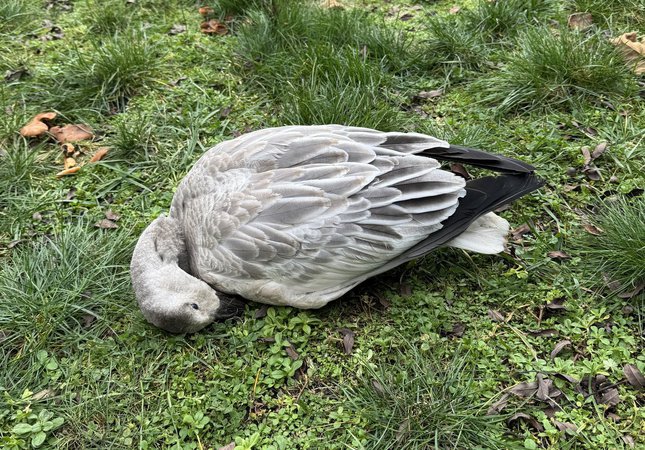
What do you do when a goose dies in your backyard, amid concerns about avian flu?
Carolyn Law didn’t think much of it when a snow goose landed in her Richmond, B.C., backyard, on Halloween.
But hours later it had barely moved. Then it started bobbing its head repeatedly. About eight hours after she first saw the bird, it rolled over, began convulsing and died.
“It was quite a sad thing to see, actually — really frightening,” Law said.
Law said she called a wildlife rescue group and was told the symptoms suggested avian flu rather than a physical injury, but without testing it couldn’t be confirmed.


